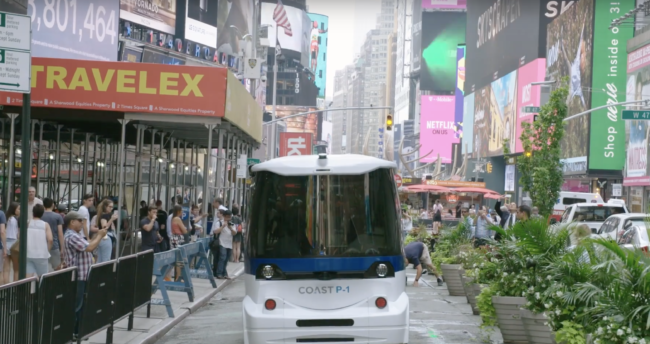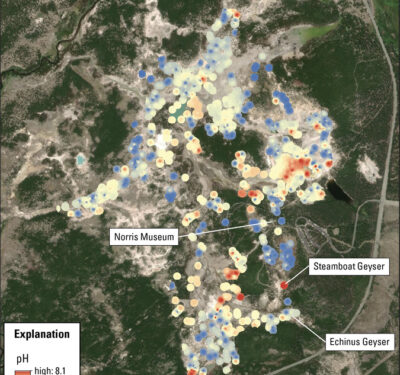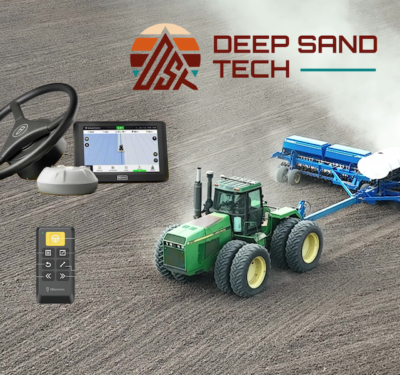
New York City’s first-ever driverless shuttle has arrived.
In famously hectic, crowded Times Square (Broadway, between 47th and 48th, to be exact) a self-driving P-1 shuttle from COAST Autonomous was recently demonstrated along an approximately 150-yard course for journalists and other interested parties. Members of the media, during the five-hour session, were provided an opportunity to take rides along the pedestrian plaza in the low-speed, electric vehicle.
“It’s historic! The very first driverless vehicle to operate in New York’s Times Square. This represents an evolutionary moment in urban transportation,” said Pierre Lefevre, inventor of the first low-speed autonomous shuttle and COAST’s CTO, in a press release. “I’m confident that self-driving shuttles will fundamentally enhance the quality of life in cities. They will allow for more developments exactly like the Broadway pedestrian plaza, here at Times Square, that give the city back to the people. They will also improve the way individuals travel around cities. Imagine what it was like when New Yorker’s saw the first subway demonstrated in Manhattan – this is similarly significant.”
Around the globe, densely populated urban centers are notorious for generating damaging noise levels and becoming impassable because of gridlock. Such environments are ideally suited to low-speed, autonomous shuttles, which have the potential to dramatically reduce traffic volume and noise, pollution, and parked vehicles in favor of pedestrian walkways and more numerous green spaces, according to COAST.
The COAST P-1 shuttle is a bi-directional, self-driving vehicle that is designed to operate in pedestrian areas, or in low speed mixed traffic (up to 20mph). The P-1 can travel at higher speeds on a dedicated lane. With no pedals or steering wheel, the vehicle operates on a network of predefined routes and can also be called using a smartphone app. Electric wheel hub motors provide a smooth ride and allow for a larger floor plan within the vehicle as there are no axels. The vehicle comfortably accommodates eight seated and four standing, but with fewer seats could carry up to 20 passengers. The P-1 chassis can also be configured as a delivery vehicle.
“Urban planning tends toward remarkable complexity, but driverless vehicles are a new technology that simplifies the transport of individuals, goods, and services,” explains Rick Baker, St. Petersburg, Florida’s mayor from 2001-2010 and now a member of the COAST Autonomous advisory board. “The COAST shuttle is designed with people in mind – and how they can best move through the city. Those who deliver goods and services will also benefit greatly from this technology – moving both more quickly, reducing congestion and making our cities more livable.”
In addition to cities, other environments that could be ideally suited to driverless shuttles like the P-1 include college campuses, airports, business parks, vacation resorts and theme parks.
“We are convinced that the deployment of driverless vehicles in low speed environments, like our P-1 shuttle and autonomous golf cart are much closer to commercialization than self-driving vehicles designed to travel at highway speeds,” explains Adrian Sussmann, COAST’s Managing Director. “This is mainly because operating at low speeds is much safer, requires less sensors and is therefore much more cost effective. We are already seeing significant interest and expect to deploy our first fleets in 2019.”






